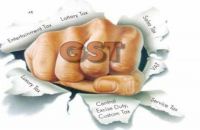
The new born tax structure of GST is remarkably anti-inflationary and progressive but scores negative on other few sides. One is the extent of complexity that a four-tier tax structure may bring. Few decades ago India’s indirect tax system was infamously called as tax jungle because of the complexities existed during the before the pre – CENVAT.
Higher the number of tax rates higher will be complexities. Adding to the four rate will be the cess that also may fall differentially on goods.
Impact of such a multiple tax rate structure on producers and sale entities is to be well evaluated. In this format, there is every chance that frictions and litigations will dominate tax administration as tax payers are ill prepared- not alone the tax officials.
GST Council’s nearly unanimous thumps up on rate structure is a political achievement for the reform. The rates of 5, 12, 18 and 28 percent, varying on the kind of goods and services is not inflationary.
In most countries, GST appear with unified rate or dual rate -for goods and services. There may be few goods placed under very low and high rates but the tax payers are well informed and equipped.
On the tax distribution front, the GST’s next big revelation will be the types of goods that may come at 28%. If larger number of goods like consumer durables, are placed in this category, the impact will be affecting businesses.











